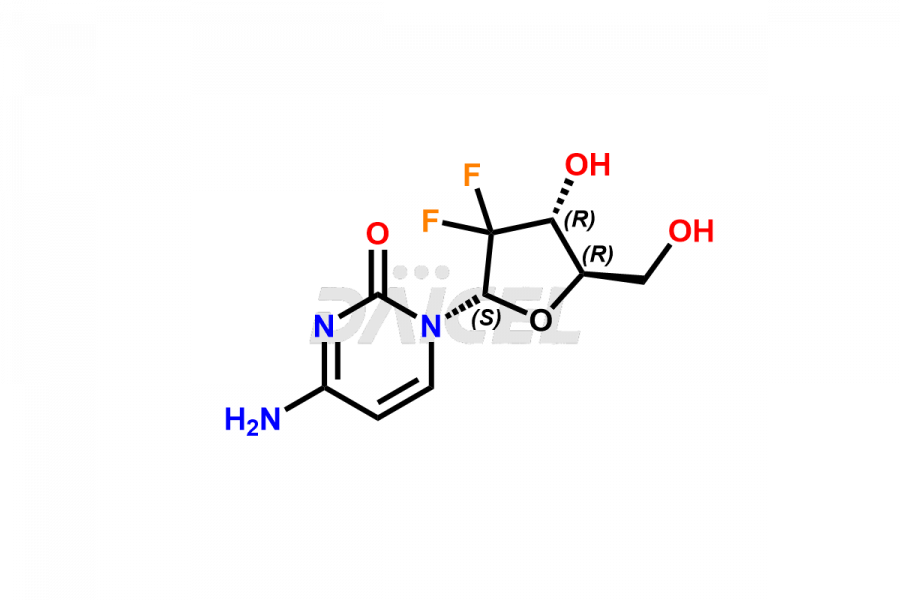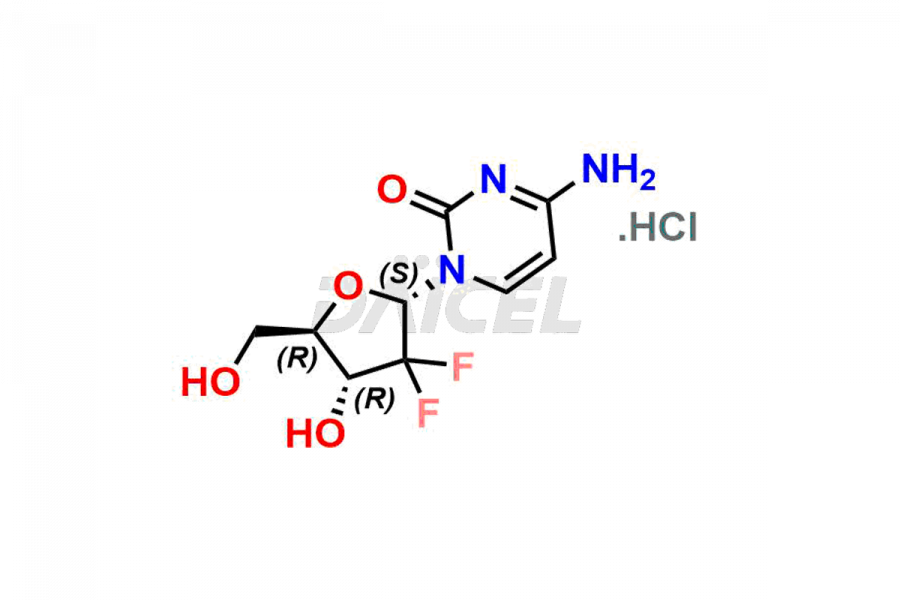Gemcitabine
General Information
Gemcitabine Impurities and Gemcitabine
Daicel Pharma specializes in synthesizing impurities for Gemcitabine, an active pharmaceutical ingredient. We offer impurities such as 1’-Epi Gemcitabine and 1’-Epi Gemcitabine Hydrochloride, which play a vital role in evaluating the purity and safety of Gemcitabine. Daicel Pharma also provides custom synthesis of Gemcitabine impurities to meet specific client needs and offer worldwide delivery options.
Gemcitabine [CAS: 95058-81-4] is a compound derived from 2′-deoxycytidine that contains fluorine atoms attached to the 2′-position. It treats breast cancer, non-small cell lung cancer, pancreatic cancer, and bladder cancer. Gemcitabine inhibits ribonucleotide reductase, which hinders DNA synthesis. It also acts as a prodrug and has been identified as an inhibitor of the enzyme EC 1.17.4.1.
Gemcitabine: Use and Commercial Availability
Gemcitabine, available under Gemzar and Infugem, is a versatile chemotherapeutic agent used alone or in combination with other anticancer drugs. It finds application in various cancer treatments. In combination with [carboplatin], Gemcitabine treats advanced ovarian cancer that has relapsed at least six months after completing platinum-based therapy. For patients with metastatic breast cancer who have previously failed anthracycline-containing adjuvant chemotherapy, unless contraindicated, Gemcitabine in combination with [paclitaxel] serves as the first-line treatment option. In the case of non-small cell lung cancer (NSCLC), Gemcitabine, along with [cisplatin], is recommended as the first-line therapy for inoperable, locally advanced (Stage IIIA or IIIB) or metastatic (Stage IV) cases. Gemcitabine and cisplatin treat Stage IV transitional cell carcinoma (TCC) of the bladder. Lastly, Gemcitabine is for patients who have previously been treated with fluorouracil.
Gemcitabine Structure and Mechanism of Action 
The chemical name of Gemcitabine is 2′-Deoxy-2′, 2′-difluorocytidine. Its chemical formula is C9H11F2N3O4, and its molecular weight is approximately 263.20 g/mol.
Gemcitabine kills cells undergoing DNA synthesis (S-phase). It inhibits ribonucleotide reductase for catalyzing the formation of deoxynucleoside triphosphates for DNA synthesis.
Gemcitabine Impurities and Synthesis
During the synthesis1 of Gemcitabine, impurities may form. They can affect the purity, stability, and efficacy of Gemcitabine. Therefore, it is essential to control and minimize impurity levels during the synthetic process through stringent quality control measures. Efficient purification techniques, such as column chromatography and recrystallization, help remove impurities and ensure the production of high-quality Gemcitabine for therapeutic use.
Daicel Pharma, in adherence to cGMP standards, has a state-of-the-art analytical facility where we prepare Gemcitabine impurities like 1’-Epi Gemcitabine and 1’-Epi Gemcitabine Hydrochloride. We offer a comprehensive Certificate of Analysis (CoA) for these impurities, providing a detailed characterization report. The CoA includes data obtained through techniques, 1H NMR, 13C NMR, IR, MASS, and HPLC purity analysis2. Upon request, we provide additional data like 13C-DEPT. We can synthesize unknown Gemcitabine impurities or degradation products. Each delivery has a comprehensive characterization report.
References
FAQ's
References
- Hertel, Larry Wayne, Nucleosides, Eli Lilly and Co., United States, GB2136425B, May 13, 1987
- Freeman, Kelly B.; Anliker, Sally; Hamilton, Marta; Osborne, David; Dhahir, Patricia H.; Nelson, Robert; Allerheiligen, Sandra R. B., Validated assays for the determination of gemcitabine in human plasma and urine using high-performance liquid chromatography with ultraviolet detection, Journal of Chromatography B: Biomedical Sciences and Applications Volume: 665, Issue: 1, Pages: 171-81, 1995
Frequently Asked Questions
How are impurities controlled during the synthesis of Gemcitabine?
Stringent quality control measures are implemented during the synthesis of Gemcitabine to minimize impurities. It includes careful starting materials selection, monitoring reaction conditions, and using purification techniques like column chromatography and recrystallization.
How are Gemcitabine impurities identified and quantified?
Impurities in Gemcitabine are identified and quantified through analytical methods, such as high-performance liquid chromatography (HPLC) or liquid chromatography (LC). These techniques help in accurately detecting and measuring impurity levels.
Which solvent helps in analyzing Gemcitabine impurities?
Water is the common solvent used when analyzing many impurities in Gemcitabine.
How should Gemcitabine impurities be stored in terms of temperature?
The recommendation is to store Gemcitabine impurities at a controlled room temperature, within 2-8 °C.
Note: Products protected by valid patents by a manufacturer are not offered for sale in countries having patent protection. The sale of such products constitutes a patent infringement, and its liability is at the buyer's risk.



